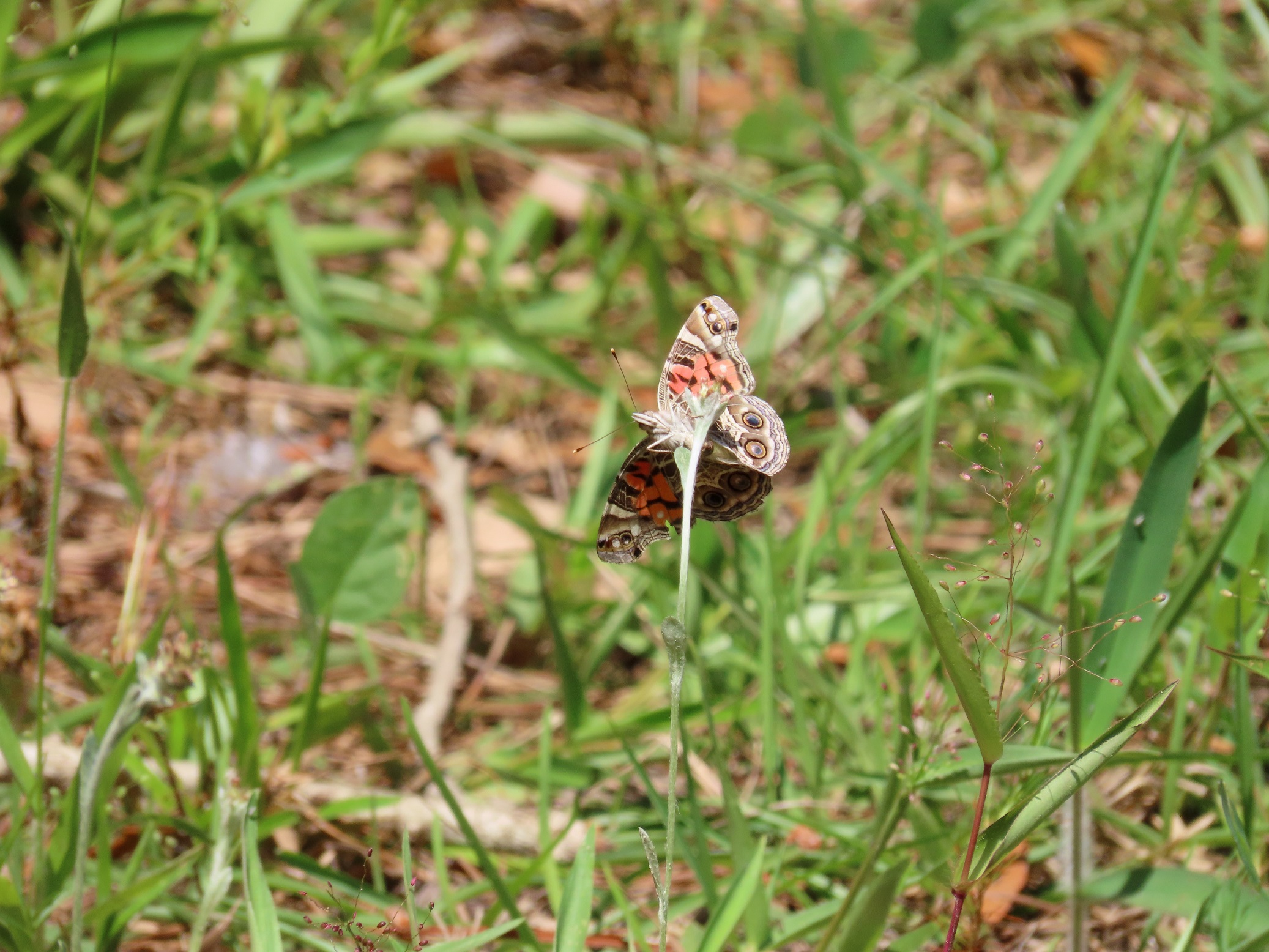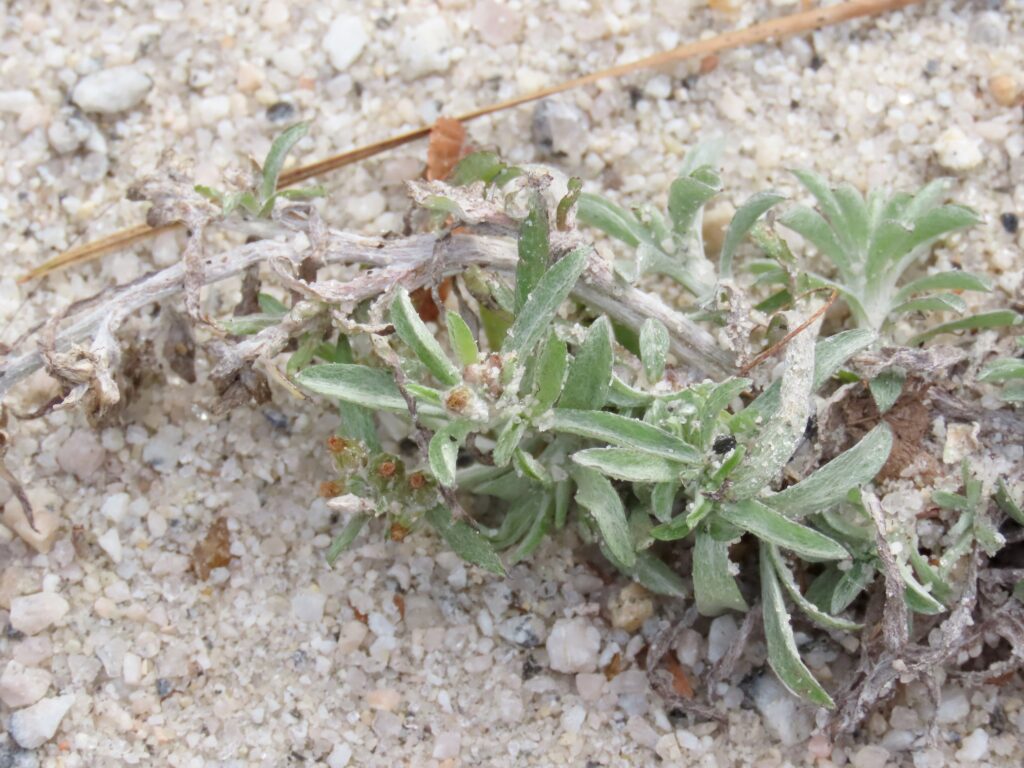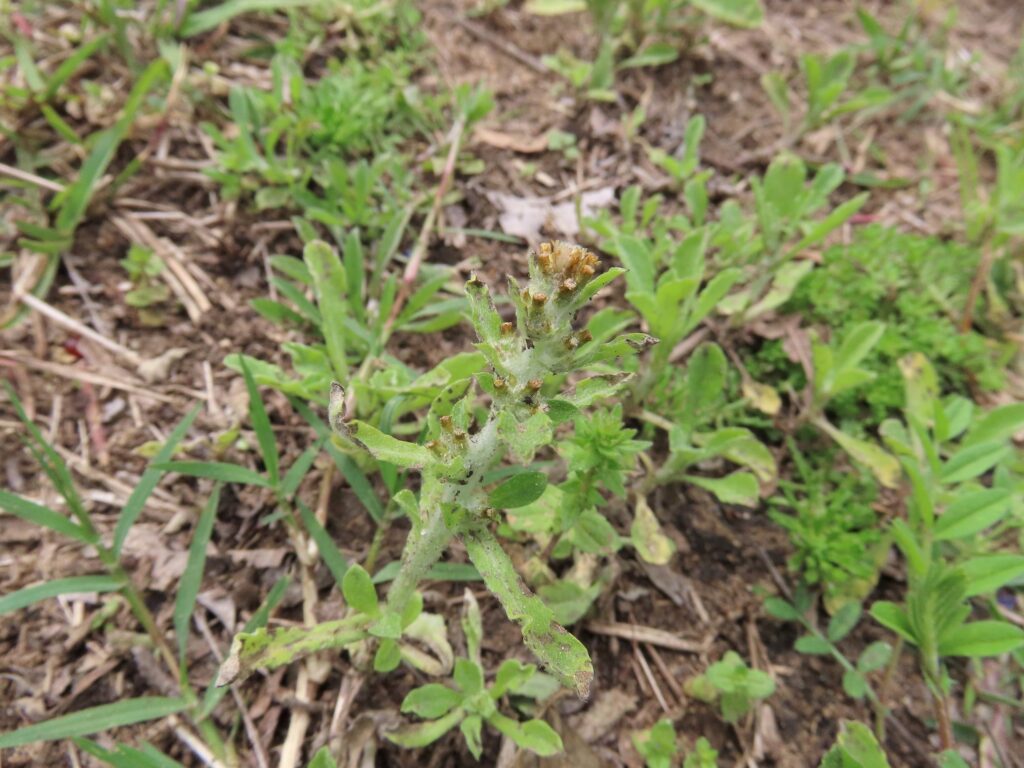
This week for Flora and Fauna Friday it’s an omnipresent weed that’s tough to get ID’d, Cudweed (Gamochaeta spp.).
Cudweed, or Everlasting, is a genus of small, innocuous, wind-dispersed wildflowers in the Aster family and they can be found growing on practically every acre of South Carolina. Cudweeds grow in lawns, along roadsides, on top of dirt piles, between field rows, in dry ditches, between stumps in clear cuts, and pretty much anywhere there’s open air and open ground. The genus itself is easy to pick out on the landscape but the individual species are tough to tell apart. We have about six species of Cudweed that can be found around the Sea Islands, three native and three introduced. The most common are Purple Cudweed (G. purpurea) and Narrowleaf Cudweed (G. calviceps), both native to the Southeast, and American Everlasting (G. americana) and Pennsylvania Cudweed (G. pensylvanica), both introduced to South Carolina. Purple Cudweed has wide, hairy, silvery leaves and purple tipped flowers. Narrowleaf Cudweed has narrow, hairy, silvery leaves and likes to grow laterally as a clump. American Everlasting has hairless leaves, platinum-white stems and leaf undersides, and also grows as a clump. Pennsylvania Cudweed has densely fuzzy, silvery stems and long, broad leaves with a fine fuzz.




Top Left: Purple Cudweed (Gamochaeta purpurea) | Top Right: Narrowleaf Cudweed (Gamochaeta calviceps)
Bottom Left: American Everlasting (Gamochaeta americana) | Bottom Right: Pennsylvania Cudweed (Gamochaeta pensylvanica)
All our Cudweeds share a few common characteristics. They have simple, spoon-shaped leaves with a cupped margin and are often covered in fine, silvery hairs. These hairs act as a sunscreen and lip balm of sorts, helping keep the plants cool and retain moisture. They grow these leaves into a tight, circular, basal rosette on the surface of the soil. Cudweeds are notable for being predominantly fall germinators, cropping up at the end of the growing season and growing all winter. In spring they send up a short, stiff flower stalk strung at the top with sparse rungs of flowers. The flowers for most Cudweed species are small, urn-shaped, petal-less, and practically devoid of any compelling colors or patterns, generally just washed in grays, browns, and greens. Once pollinated these flowers mature to release a tuft of wind-blown seeds. Most species are annuals, but some biennials. Cudweeds are a wall flower of the wildflowers, existing everywhere in plain sight, but rarely at the forefront of anyone’s mind. However, they do play an ecological role as a pioneer species. They’re one of the first plants to take root on new terrain and freshly turned earth, helping to stabilize the soil and make way for more perennial plants. They are also one of the host plants for the American Lady butterfly (Vanessa virginiensis). Their spiny, khaki and black striped caterpillars feed on Cudweed leaves and flowers, curling their stalks to build a silken tree house, where they can retreat during the day.